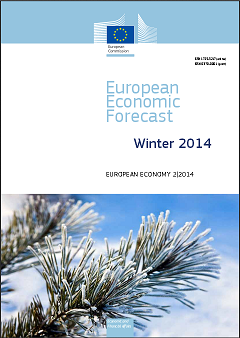Núñez-Ferrer, J. & Katarivas, M. (2014) “What are the effects of the EU budget: Driving force or drop in the ocean?”, CEPS Special Reports, Economic Policy, 28 Aπριλίου. The study presents an overview of the impact of the main investment tools of the EU budget. The focus is on the increasing role of the financial instruments, which are fundamentally changing the budget’s nature and reach. Through these instruments, the …Read More
European Banking Union: Status of Implementation and the Need for Improvement
Bauer, M. & Demary, M. (2014) “European Banking Union: Status of Implementation and the Need for Improvement“, Konrand Adenauer Stiftung, 23 Απριλίου. The crisis in the euro area revealed points of weakness in the architecture of the Monetary Union. It appeared that the common monetary policy also required a common system of banking supervision. This report summarises the current proposals and decisions regarding the Banking Union and evaluates the …Read More
Government wages and labour market outcomes
European Commission (2014) “Government wages and labour market outcomes”, European Economy. Occasional Papers, Απρίλιος 2014: Βρυξέλλες. As most European countries are trying to consolidate public finances, whilst also attempting to improve cost competitiveness for external rebalancing and abate unemployment, it is crucial to assess government wage formation, its outcomes and interaction with private sector labour costs. This paper provides an overview of government wage setting regimes, an empirical analysis …Read More
What drives the German current account? And how does it affect other EU member states?
Kollmann, R., Ratto, M., Roeger, W., In’t Veld, J. & Vogel, L. (2014) “What drives the German current account? And how does it affect other EU member states?”, European Economy, Economic Papers, Απρίλιος 2014. We estimate a three-country model using 1995-2013 data for Germany, the Rest of the Euro Area (REA) and the Rest of the World (ROW) to analyze the determinants of Germany’s current account surplus after the …Read More
The Global Economy in 2030: Trends and Strategies for Europe
Gros, D. & Alcidi, C. (2014) “The Global Economy in 2030: Trends and Strategies for Europe“, Economic Policy, CEPS Paperbacks, 02 Απριλίου. This groundbreaking study concentrates on a set of critical economic factors that will shape future economic growth at the global level and offers a description of the possible evolution of their reach and scope. Our goal in pursuing this research is not to make precise predictions about …Read More
European Economic Forecast, Winter 2014
European Commission (2014) “European Economic Forecast, Winter 2014“, Directorate-General for Economic and Financial Affairs, Φεβρουάριος, Βρυξέλλες. Europe’s economic recovery, which began in the second quarter of 2013, is expected to continue spreading across countries and gaining strength while at the same time becoming more balanced across growth drivers. As it is typical following deep financial crises, however, the recovery remains fragile. Nevertheless, recent positive economic news means that the …Read More
Financing the Real Economy
Canton, E. (2014) “Financing the Real Economy“, ECFIN Economic Brief, Issue 30, Φεβρουάριος 2014. Introduction In the aftermath of the economic and financial crisis, policymaking became more geared towards structural reforms to support the process of economic recovery, steered at the EU level through the reinforced economic govern-ance. While there areencouraging signs that an economic recovery is underway in Europe, growth pro-spects are modest and further re-forms remain necessary …Read More
Emerging economies respond to market pressure
Bank for International Settlements (BIS), “International Banking and Financial Market Developments”, Quarterly Review, Μάρτιος 2014. The retrenchment from emerging market economies resumed in full force around the turn of the year, as their subdued growth outlook continued to diverge from the optimistic sentiment in mature markets and as US monetary policy reduced the flow of easy money. Investors were also unsettled by signs of economic weakening and growing financial risks …Read More
Monetary Developments in the Euro Area, January 2014
European Central Bank (2014), “Monetary Developments in the Euro Area, January 2014”, Press Release, Φεβρουάριος. The annual growth rate of the broad monetary aggregate M3 increased to 1.2% in January 2014, from 1.0% in December 2013. The three-month average of the annual growth rates of M3 in the period from November 2013 to January 2014 stood at 1.2%, compared with 1.3% in the period from October 2013 to December 2013. Σχετικές Αναρτήσεις …Read More
European Vacancy Monitor No 12
European Commission (2014), European Vacancy Monitor No 12, Brussels The European Vacancy Monitor is published quarterly by DG Employment, Social Affairs & Inclusion of the European Commission. This is a publication within the Europe 2020 flagship initiative ‘An Agenda for New Skills and Jobs’ feeding into the ‘European Skills Panorama’. Neither the European Commission nor any person acting on behalf of the Commission may be held responsible for the use that may …Read More





